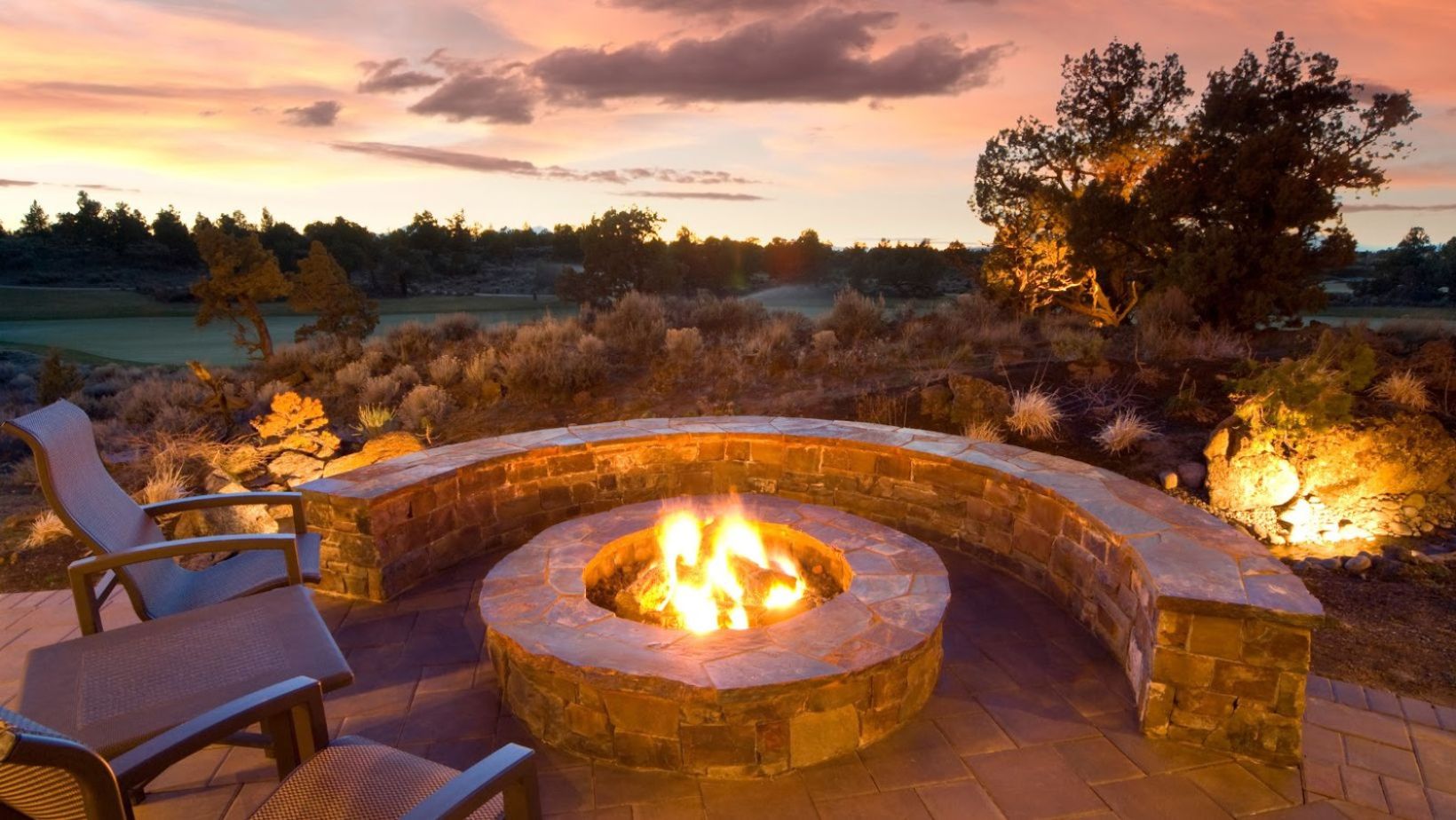Choosing the right fire table for your outdoor space often comes down to deciding between gas and propane options. The key difference is that natural gas fire tables connect to a gas line, while propane fire tables use a replaceable tank. This simple detail can affect the installation, fuel cost, and convenience for you and your family.
Natural gas fire tables are usually more cost-effective to operate, but they need a fixed connection to your home’s gas line. Propane fire tables offer more flexibility in placement since you don’t need to install a line, and they can burn hotter than natural gas models. If you’re looking to add warmth and style to your backyard, you can explore our fire tables to compare different fuel types and designs.
Key Differences Between Gas and Propane Fire Tables
Natural gas and propane fire tables work well for outdoor heating but differ in fuel, installation, and cost. Choosing between them depends on how much heat you want, where you can run fuel lines, and how you plan to use your outdoor space.
Fuel Types and Sources
The fuel you use changes how your fire pit works and how easy it is to use. Propane fire pits run on portable tanks that you can swap out or refill. You can place most propane fire pits almost anywhere outdoors because you don’t need a fixed gas line.
Natural gas fire tables connect to a home’s built-in gas supply. This means you don’t need to refill tanks, but you do need a permanent connection. Once installed, you can use your fire pit at any time without worrying about running out of gas.
Some outdoor fire pits have kits that let you switch between propane and natural gas. However, changing fuel types after installation often requires new parts and some extra work.
Heat Output and BTU Ratings
Heat output is measured in British Thermal Units (BTUs). Propane usually burns hotter than natural gas, so propane fire pits can offer more heat for their size. For example, a typical propane fire pit can deliver around 40,000 to 60,000 BTUs.
Natural gas fire pits often have lower max BTU ratings than propane models. However, conversion kits and larger burners can help increase heat if needed. While both fuels make plenty of warmth for cold nights, propane may be better if you want the most heat from a compact pit.
If even warmth and steady flames are your main goal, both types can deliver, but differences in heat output may help you decide what is best for your needs.
Fuel Cost and Ongoing Expenses
How much you spend over time depends mostly on your fuel type and how often you use your fire pit. Propane, bought in tanks, costs more per use than natural gas. You pay for each tank refill, and costs can add up if you use your fire pit a lot.
Natural gas is piped directly to your outdoor fire pit, so you never need to worry about running out mid-use. It is usually less expensive than propane if you already have a natural gas line installed. Your bills will increase based on how much you use it, but the cost per hour of use tends to be lower than propane.
Consider ongoing expenses like tank refills or increased gas bills before choosing between propane and natural gas fire pits.
Installation and Setup Requirements
Setup is usually faster for propane fire pits. You just need a flat space and enough room for the tank nearby. Most people can set them up on their own without professional help. This makes propane good for portable needs or if you like to move your setup around.
Natural gas fire tables need a fixed gas line. A qualified professional must do installation for safety and legal reasons in many places. While installation costs more upfront, you don’t have to move tanks or worry about running out of gas later.
If you like do-it-yourself projects, propane is easier to install and maintain. Natural gas is better for a semi-permanent or permanent outdoor setup.
Both types need regular safety checks, but propane setups usually have fewer parts and attachments to check. Be sure to follow the manufacturer’s instructions for safe installation and use.
Choosing the Right Fire Table for Your Outdoor Living Space
Every fire table works differently based on fuel type, storage options, and setup. Picking the right fire table depends on things like how much upkeep you want to do, how you store fuel, the look you like best, and what matters to you for safety and the environment.
Maintenance and Storage Considerations
Gas and propane fire tables are easier to clean compared to wood-burning fire pits, as you do not need to deal with ashes or leftover firewood.
Propane tanks often fit in a hidden compartment built into the base, making storage simple and visually tidy. Refilling or swapping tanks is usually fast, but you need to keep a backup on hand.
Wood-burning fire pits require a steady supply of firewood and a dry place to keep it. You need to remove ash after every use. They are sometimes messier, especially if you do not have good storage for wood outdoors.
Many gas and propane tables now come with extras like remote-controlled ignition, which can make starting the fire quick and easy. Check if a fire pit can handle outdoor storage during winter or if you need a weather cover.
Environmental Impact and Safety Factors
Propane fire tables give off fewer particles than wood-burning fire pits and create less smoke when lit. This can make them a better choice for people with allergies or in places with air quality rules. Natural gas lines used in some fire tables give you a steady fuel supply and do not need tanks, but installation means hiring a professional.
Wood-burning fire pits use natural firewood, but burning wood gives off smoke and particles that can bother neighbors or affect air quality. If you like the look and smell of real firewood, you may choose wood, but take care with open flames in small yards or close to trees.
Both propane and gas models have safety features, such as shut-off valves and spark screens. Make sure your chosen model follows local codes for safe use outdoors.
Fire Table Styles and Design Options
There is a wide variety of fire pit styles to choose from. Propane and gas fire tables often double as an accent piece or even a dining table, blending with many outdoor living spaces. Hidden tank fire pits keep fuel tanks out of sight, making the design look cleaner.
Fire tables come in different shapes, such as round, square, or rectangular. Many styles use materials like stone, metal, or glass for different looks. Some tables have larger tabletops, giving extra space for food or drinks.
Wood-burning fire pits are often more rustic, using steel or stone for a traditional look. Consider how the fire table fits into your outdoor décor and how it will be used—whether you want it for heat, as a gathering spot, or as a centerpiece.
Conclusion
Choosing between gas and propane fire tables depends on your needs and space.
Natural gas fire tables work well if you want a fixed spot and fewer refills. Propane fire tables offer more heat and are easier to move around your outdoor area.
Propane usually gives a hotter flame, while natural gas is often cheaper to use over time.
Both options can help you enjoy outdoor gatherings and add warmth to your space.

